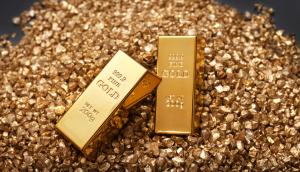
KenWorks Experts Reveal How to Distinguish Genuine Gold from Counterfeits
Ken Bowers, owner of KenWorks, emphasizes that high-quality counterfeit gold can deceive even seasoned buyers. Precision, care, and the right tools are required to properly distinguish genuine pieces from clever fakes.
“Identifying genuine gold goes beyond eye appeal; it requires testing for density, verifying purity markings, and using the appropriate detection devices,” said Bowers. “Relying on visual cues alone puts investments at risk.”
Density Testing: A Reliable First Step
Gold’s high density is one of its most definitive properties. Accurate weighing followed by volume displacement measurements offers a quick and dependable assessment. If the density deviates from 19.32 g/cm³, the item likely contains alloyed base metals or has been plated. Even thin plating over base metal fails to mimic gold’s signature weight accurately—an imitator may feel surprisingly light when scrutinized.
Purity Hallmarks and Their Verification
Genuine gold items are typically marked with purity stamps, such as “24K,” “18K,” or “14K,” or with millesimal fineness indicators like “999” or “750.” Expert evaluation focuses on the presence and authenticity of these marks. Vague or absent markings raise suspicion. Inconsistent or poorly stamped hallmarks often suggest forgery, as counterfeiters may attempt to mimic recognized formats without strict adherence to standards.
Magnetism Checks Confirm Non-Magnetic Nature
Gold demonstrates negligible magnetic properties. A basic test involves holding a strong magnet close to the piece. If the item shows any attraction, it indicates the use of magnetic metal cores simulating the appearance of gold. Genuine pieces remain unaffected in this test, serving as a quick screening method in the field.
Acid Testing for Confirming Purity
Gold acid test kits, which contain acids tailored to precisely defined karat levels, offer a practical way to confirm authenticity. A small scratch is made in an inconspicuous area of the piece, and a drop of testing acid is applied. Genuine gold resists corrosion under acid, while base-metal substitutes will react visibly. Accurate use of this method requires knowledge of acceptable immersion times and interpretation of reaction effects to avoid false conclusions.
Electronic Gold Testers and XRF Analysis
Electronic gold testers measure conductivity levels to estimate karat purity. More advanced verification uses X-ray fluorescence (XRF) analyzers, which conduct a non-destructive elemental scan. These devices reveal the full metal composition without damaging the piece. Such technical instruments provide accuracy beyond manual methods and serve as definitive tools for confirming authentic gold content.
Visual and Tactile Inspection: Not to Be Dismissed
Experienced examiners also rely on visual and tactile evaluation. Real gold displays natural wear, including patina and slight scratches. Inconsistent coloration, seams, or signs of flaking may indicate plating over cheaper metals. Real gold retains warmth when held and develops natural fingerprints, while fakes often feel unnaturally cool or glossier in appearance.
Weight Comparison Using Standard References
Many authentic gold pieces adhere to consistent weight expectations based on design—especially investment-grade bars or coins. Experts compare suspect items with verified reference pieces. Significant weight discrepancies suggest counterfeit or alloy dilution. Even minor inconsistencies can signal inferior composition or casting errors.
Sound and Ring Testing for Acoustic Patterns
Genuine gold produces a distinct, deep ringing sound when tapped or dropped lightly on a hard surface. Counterfeits may emit dull clinks, reflecting the presence of base metals or alloys. While ring tests alone cannot determine purity, they serve as a supporting signal that complements other testing methods.
Documentation and Provenance Matter
Verifiable documentation—such as assay certificates, receipts, or recognized mint markings—can validate authenticity. Well-documented items often show consistent records of ownership, assay testing, or sales from reputable dealers. These materials enhance confidence and traceability in the transaction.
Educational Efforts for Consumer Awareness
KenWorks undertakes active efforts to educate prospective gold buyers. Informational seminars and online resources explain the testing process and common red flags. The goal is to empower individuals to perform basic screenings before finalizing large purchases—reducing financial loss and preventing scams.
Quote from KenWorks Owner
“Effective evaluation combines density testing, hallmark inspection, acid reaction, and electronic analysis,” said Bowers. “Adopting a multi-step approach significantly reduces the chances of accepting counterfeit items.”
About KenWorks
KenWorks, based in Metairie, Louisiana, offers expertise in precious metals testing, appraisal services, and authenticity verification. Owner Ken Bowers directs the company with a focus on rigorous practices and client safeguarding in gold transactions. Services extend to retail customers, collectors, investors, and dealer networks throughout the Southeast.
Morgan Thomas
Rhino Digital, LLC
+1 504-875-5036
email us here
Visit us on social media:
Facebook
Distribution channels: Business & Economy, Consumer Goods, Culture, Society & Lifestyle, Retail
Legal Disclaimer:
EIN Presswire provides this news content "as is" without warranty of any kind. We do not accept any responsibility or liability for the accuracy, content, images, videos, licenses, completeness, legality, or reliability of the information contained in this article. If you have any complaints or copyright issues related to this article, kindly contact the author above.
Submit your press release

